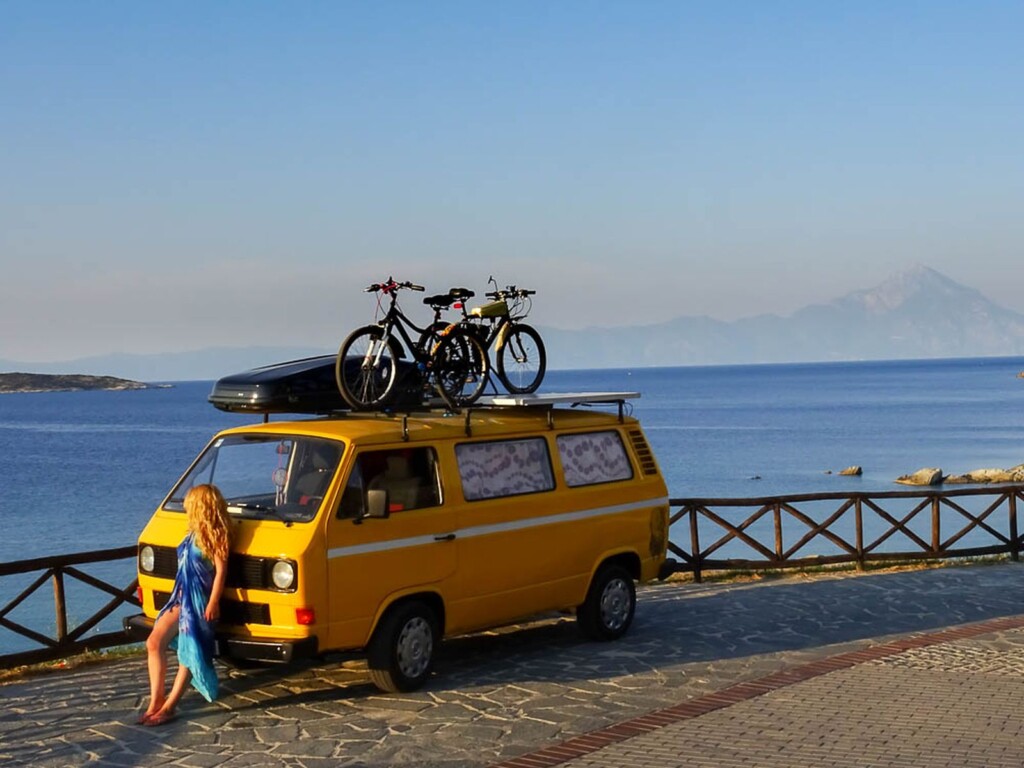Sometimes, less is more. For sure, traveling is one of the things that applies to. The infrastructure is there to travel and see many places in a relatively short amount of time, sometimes even when traveling on a budget. It is tempting, too, because your senses get immersed into a range of new experiences, one after the other.
Is it possible though that we miss out on something when taking this speedy approach? Many travelers think we do. Hence, the concept of slow travel has gained popularity, especially in recent times. In this guide, we will take a look at what slow travel is, how you can benefit from it and some tips to get started.
What is slow travel?
In a fast-paced world, many of us have a hard time taking a step back or even knowing what taking a step back means. Sometimes, when we take a step back, other more subtle experiences start to happen, whether in the exterior or interior world.
Ask any meditator what happens when they retreat for a couple of days, switch off all technology, and just be. They will likely share some deep insights that have surfaced because of taking a step back. The meditator has created an environment in which they are receptive to a deeper, more meaningful part of life.
The same principle applies to slow travel. If you let go of expectations, planning in detail, and trying to see many places and move around a lot, you will miss out on a deeper immersion of culture and environment.
It is thus not about moving slow, it is about having a deeper and more meaningful experience because of going slow.
Just think about it. You normally arrive in a place and then usually start exploring all the hotspots of the area. But what if you gave yourself some more time to meet the locals, learn about their lives, families, food preferences, and more? You fully immerse and gain a new, deeper perspective of life. How valuable is this!
That is not all that slow travel is all about, though. It is also about being conscious of the environment. Let´s take a look at that.
Responsible travel for environmental purposes
People who embrace the concept of slow travel also do so because of being aware of the necessity to reduce carbon footprint. Traveling often has a harmful impact on the environment, and traveling less means less harm. Slow travelers have the awareness of their environmental responsibility.
Thus, slow travel not only emphasizes quality over quantity but also focuses on responsible traveling.



A look at the history of slow travel
Slow travel originates from the concept of slow food, which is a movement that started in Italy in the 1980s. The slow food concept can be seen as a protest against fast food. The idea is that slow food promotes local communities and foods made with love and cultural awareness.
Slow travel is a similar protest against fast travel. As discussed earlier, fast and convenient traveling appears to have taken center stage among many. We want to move faster, see more things and use all kinds of technological tools to help us achieve just that.
In the process, similar to fast food, we often lose the connection with the local community and cultural experience.
The benefits of slow travel
By now you have a pretty good idea of what slow travel is all about. Let’s summarize the main benefits of slow traveling:
- Connecting with the local community: Slow travel allows you to immerse yourself in the culture of an area and with the people.
- Conscious travel: Less travel means less harm to the environment.
- Saving travel costs: Getting to a place is often expensive, hence if you stay longer in a place you will save on travel costs (this may be offset to one of the cons though – we will discuss that in a minute).
- Bathe in a new language: If you give yourself more time in one place, you will also more likely learn the language faster, if that is what interests you. Learning the local language is part of understanding the culture and hence a major part of the slow travel concept.
- Remote working: If you stay in one spot you will also have some more time and a dedicated space for remote working, as opposed to while you are on the road all the time.
The cons of slow travel
There are some possible cons to slow travel. A short overview of potential cons:
- Short holidays: If your only option is to have a short holiday, slow travel may not be the best option. In general, slow travel particularly applies to those traveling for several months. A digital nomad career can provide the best of both worlds, though, allowing you to travel for a longer period of time but maintaining an income.
- Local can be expensive: If you opt for the slow travel style, you choose local and environmentally-friendly approaches. When it comes to food, for example, you may find that these options are more expensive. Think of organic produce. Going local saves on travel costs but may increase the costs of staying in a place.
- Less variety, less excitement: People travel to explore and experience, especially those who live and work in a fixed place for most of the year. Hence, when traveling, the urge is to explore a lot. When going for slow travel, you get a little bit less of that excitement and buzz, since you are staying in one spot for a while. The buzz needs to come from a different angle, namely by fully immersing in the place you are visiting.
6 tips for traveling more slowly
1. Research
If you plan to stay in one place for a while, make sure to choose the right one. A bit of pre-planning and researching is required to find your dream location before heading off.
2. Travel outside of peak season
Peak season is obviously when lots of places get overflooded with tourists. To really immerse in a local community, it may be better to travel outside of the peak season.
3. Go to a bus-friendly country
Slow travel is a great concept that fits well with Buslife. However, depending on various factors such as budget and climate preference, you will need to make your choice as to what is the right place. If you plan on staying somewhere for a while, where will your VW Bus be stationed? Countries like Spain are ideal for Buslifers.
4. Plan to walk a lot
For most people, staying local means putting on the walking shoes and going walking…a lot! Make sure to have the right walking gear to keep your feet happy.
5. Participate in local events
Find out about local events by going to the city or town hall, asking in a local bar or cultural center, or by checking apps like Meetup (tip: this may help you with point 1 of this list).
6. Volunteer
Through platforms like Woofing and Helpx, you can find volunteering opportunities around the world that often allow you to stay in one place for a while.
Are you ready to slow travel? Tell us about your experiences and plans in the comments.



[…] Here at Buslifers, we have been really inspired by the concept of slow travel. As you will read in A Guide to Slow Travel, there are so many benefits to staying in one place longer than a week or two. The best benefit, in […]
[…] and that it shouldn’t be a replacement for the practice of slow travel. Take a look at our Guide to Slow Travel to learn more about the importance and benefits of this […]